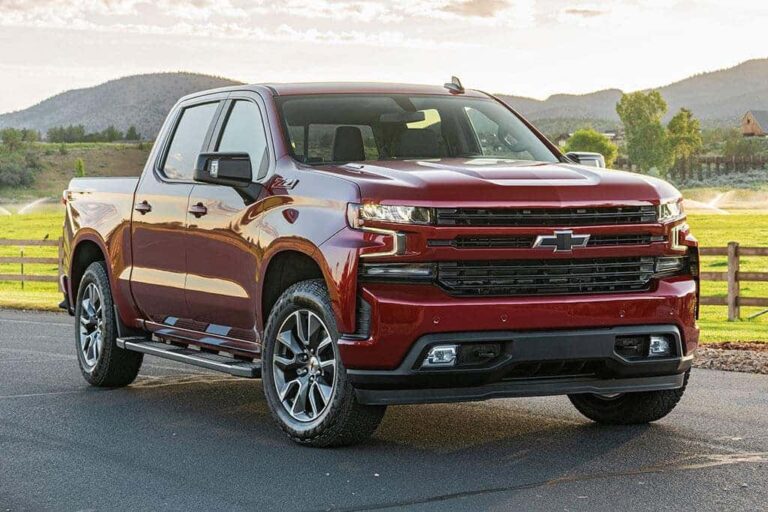Leer Cap Application Chart: Your Definitive Guide to Perfect Truck Cap Fitment
Leer Cap Application Chart: Your Definitive Guide to Perfect Truck Cap Fitment cars.truckstrend.com
For truck owners, the addition of a cap or topper is more than just an aesthetic upgrade; it’s a significant enhancement to functionality, security, and cargo protection. Whether you’re a contractor needing to secure tools, an outdoor enthusiast hauling gear, or simply looking to protect your truck bed from the elements, a high-quality truck cap like those offered by Leer is an invaluable investment. However, the success of this investment hinges entirely on one critical factor: fitment. This is where the Leer Cap Application Chart becomes an indispensable tool.
The Leer Cap Application Chart is a comprehensive cross-reference guide designed to match specific Leer truck cap models with compatible truck makes, models, and years. It acts as the definitive blueprint, ensuring that the cap you choose will perfectly integrate with your truck’s bed dimensions, cab style, and overall contours. In a market flooded with various truck configurations, this chart eliminates guesswork, prevents costly mistakes, and guarantees a seamless, secure, and aesthetically pleasing fit. Without it, finding the right cap would be a daunting, error-prone task, leading to frustration, wasted time, and potential damage.
Leer Cap Application Chart: Your Definitive Guide to Perfect Truck Cap Fitment
What is the Leer Cap Application Chart? Unpacking Its Core Components
At its heart, the Leer Cap Application Chart is a meticulously compiled database. It’s the result of extensive engineering and measurement by Leer to ensure their diverse range of caps fits the equally diverse range of trucks on the road. Understanding its components is key to utilizing it effectively:
-
Vehicle Identification: The primary columns of the chart are dedicated to identifying your truck. This typically includes:
- Truck Make: (e.g., Ford, Chevrolet, Ram, Toyota, Nissan)
- Truck Model: (e.g., F-150, Silverado 1500, Ram 1500, Tacoma, Titan)
- Model Year Range: (e.g., 2015-Current, 2007-2013). This is crucial as truck beds can change dimensions even within the same model name across different generations.
- Bed Length (in feet or inches): This is perhaps the most critical dimension. Truck beds come in various lengths (e.g., 5.5 ft, 6.5 ft, 8 ft), and a cap designed for one length will not fit another.
- Cab Type: (e.g., Regular Cab, Extended Cab, Crew Cab). While less direct for cap fit, it helps in overall vehicle identification and sometimes influences bed length availability.

-
Compatible Leer Cap Information: Once your truck is identified, the chart lists the corresponding Leer cap models that will fit. This typically includes:
- Leer Cap Series/Model Number: (e.g., 100R, 100XR, 100XQ, 180, 122). Each series represents a different style, feature set, and price point.
- Specific Fitment Notes/SKUs: These are vital. They might specify "excl. Raptor," "new body style only," "with or without Rambox," or other unique considerations that affect fitment. Sometimes a specific SKU (Stock Keeping Unit) or part number is listed for precise ordering.


The Undeniable Benefits of Utilizing the Application Chart
Leveraging the Leer Cap Application Chart offers a multitude of advantages for the truck owner:
- Unparalleled Accuracy and Precision: The chart eliminates guesswork. It’s based on precise measurements and engineering, ensuring that the cap you select is truly designed for your truck’s exact specifications. This prevents the common mistake of ordering a cap that’s too long, too short, or simply doesn’t sit correctly.
- Significant Time and Cost Savings: An incorrect cap purchase can be an expensive ordeal. Returns involve re-packaging, shipping costs, and restocking fees, not to mention the downtime and frustration. By using the chart, you avoid these pitfalls, ensuring a "buy once, buy right" experience.
- Enhanced Vehicle Protection and Security: A perfectly fitted cap seals effectively against the elements, protecting your cargo from rain, snow, and dust. A snug fit also enhances security, making it harder for unauthorized access. A poorly fitting cap can lead to leaks, rattles, and compromised security.
- Maintaining Aesthetic Integrity: Leer caps are designed to complement the lines of your truck. A proper fit ensures a seamless, factory-like appearance, preserving and even enhancing your truck’s aesthetic appeal. An ill-fitting cap looks out of place and detracts from the vehicle’s overall look.
- Informed Decision-Making: Beyond just fitment, the chart helps you see which types of Leer caps (e.g., entry-level 100R, feature-rich 100XR, high-end 100XQ) are available for your truck. This empowers you to choose a cap that not only fits but also meets your functional and budgetary needs.
- Warranty Compliance: Many manufacturers require proper installation and compatible accessories for warranty validity. Using the official application chart helps ensure you’re within these guidelines.
How to Effectively Use the Leer Cap Application Chart: A Step-by-Step Guide
Using the chart is straightforward, but precision is paramount:
-
Identify Your Truck’s Exact Specifications:
- Make and Model: Easy enough, e.g., "Ford F-150."
- Model Year: Crucial. Check your registration, title, or VIN (Vehicle Identification Number) for the precise model year. A truck bought in late 2023 might be a 2024 model year.
- Bed Length: This is the most common point of error. Do not guess. Measure your truck bed from the inside of the bulkhead (closest to the cab) to the inside of the tailgate when closed. Round to the nearest common length (e.g., 5.5 ft, 6.5 ft, 8 ft).
- Cab Type: (e.g., Regular Cab, SuperCab/Extended Cab, SuperCrew/Crew Cab). This often correlates with available bed lengths.
-
Locate Your Vehicle in the Chart: Scan the chart for your specific make, model, and year range. Once you find it, confirm the bed length matches your measurement.
-
Interpret the Corresponding Leer Cap Models: The rows associated with your truck will list the compatible Leer cap series (e.g., 100R, 100XR). This gives you your options.
-
Note Any Special Instructions or Footnotes: This is often overlooked but incredibly important. A small footnote might say "Excludes models with Multi-Pro Tailgate" or "Requires specific factory bed prep package." These notes can save you from a non-fitting cap.
-
Cross-Reference and Verify: While the chart is highly accurate, it’s always wise to perform a final verification. If purchasing from a dealer, provide them with your truck’s exact details (and even VIN) and the cap model you’re interested in. They can often double-check using their internal systems or the latest version of the chart.
Key Considerations When Consulting the Chart
Beyond the basic steps, several factors can influence fitment and should be considered:
- Bed Liners (Drop-in vs. Spray-in): While spray-in liners generally don’t affect fitment, thick drop-in liners can sometimes slightly reduce the effective bed width or depth, potentially impacting the cap’s seal or clamping mechanism. Discuss this with your dealer.
- Tailgate Style and Features: Modern trucks have increasingly complex tailgates (e.g., multi-function, power open/close). Some caps might have specific requirements or limitations regarding these features.
- Cargo Management Systems: Factory-installed track systems or bed dividers might interfere with the cap’s mounting rails or require specific adapters.
- Aftermarket Modifications: If your truck has undergone significant aftermarket modifications to the bed or frame, the standard application chart might not apply. Custom solutions or professional assessment would be necessary.
- New Model Year Releases: Truck manufacturers frequently update models. Ensure you are using the most current version of the Leer chart, as a truck from the current year might have different bed dimensions than the previous year, even if the model name is the same.
Types of Leer Caps and Their Representation on the Chart
The Leer Cap Application Chart doesn’t just tell you if a cap fits, but which cap models fit. Leer offers a diverse lineup, each with distinct features:
- 100R (Recreational): Often Leer’s entry-level model, known for its classic wedge shape and basic functionality. The chart will simply list "100R" as a compatible option.
- 100XR (Xtra-Recreational): A popular choice, offering features like a frameless glass rear door and side windows that slide open. The chart will specify "100XR" for compatible trucks.
- 100XQ (Xtra-Luxury): The premium option, boasting a sleek, SUV-like appearance with a flush-mounted rear door and often carpeted interiors. Its fitment is precise, and the chart will clearly denote "100XQ."
- 180 (Mid-Rise): Provides extra head height and cargo volume due to its slightly taller, contoured design. The chart indicates "180" for compatible trucks where the additional height is accommodated.
- 122 (High-Rise): Offers maximum cargo capacity with a significantly taller profile, ideal for commercial use or carrying large items. Its unique dimensions mean it’s listed specifically where compatible.
The chart effectively serves as a menu, presenting all the Leer cap options available for your specific truck, allowing you to choose based on style, features, and budget, all while being assured of a perfect fit.
Potential Challenges and Solutions
While invaluable, using the chart can sometimes present minor hurdles:
- Outdated Chart Versions: Manufacturers regularly update their charts. Always seek the most current version from an authorized Leer dealer or Leer’s official website.
- Ambiguous or Missing Entries: If your truck’s specific configuration isn’t clearly listed, or you encounter conflicting information, do not guess. Contact an authorized Leer dealer directly with your VIN; they have access to the latest data and specialized tools.
- Highly Modified Trucks: For trucks with custom beds, significant frame alterations, or non-standard configurations, the chart might not provide an answer. In such cases, a custom cap or a professional assessment by a fabricator may be necessary.
- New Truck Models: When a brand new truck model or generation is released, it might take some time for Leer to engineer and update their application chart. Patience or direct inquiry to Leer is required.
Tips for a Smooth Leer Cap Purchase and Installation
- Measure Twice, Order Once: Re-emphasize measuring your truck bed accurately. Even a half-inch can make a difference.
- Consult an Authorized Dealer: They have the most up-to-date charts, expert knowledge, and often provide professional installation, ensuring proper sealing and security.
- Consider Accessories: Think about roof racks, interior lighting, or carpeting at the time of purchase, as some are factory-installed options.
- Understand Your Warranty: Familiarize yourself with Leer’s warranty terms and ensure your cap choice and installation method comply.
Table: Illustrative Leer Cap Application Chart & Estimated Pricing
Please note: The prices provided below are estimated Manufacturer’s Suggested Retail Prices (MSRP) for base models, without options or installation, and are subject to change based on dealer, region, promotions, and specific configurations. Actual prices will vary significantly. This table is for illustrative purposes only to demonstrate the type of information found in an application chart, including a hypothetical price range column.
| Truck Make | Truck Model | Model Year Range | Bed Length (ft) | Cab Type | Compatible Leer Cap Series | Notes / Special Fitment | Typical Price Range (USD, Est. Base MSRP) |
|---|---|---|---|---|---|---|---|
| Ford | F-150 | 2015-Current | 5.5 | SuperCrew | 100R, 100XR, 100XQ | Short Bed; Excludes Raptor | $2,000 – $3,500 |
| Ford | F-150 | 2015-Current | 6.5 | SuperCab, SuperCrew | 100R, 100XR, 180 | Standard Bed | $2,100 – $3,700 |
| Chevrolet | Silverado 1500 | 2019-Current | 5.8 | Crew Cab | 100R, 100XR, 100XQ | Short Box; New Body Style | $2,000 – $3,500 |
| Chevrolet | Silverado 1500 | 2019-Current | 6.6 | Double Cab, Crew Cab | 100R, 100XR, 180 | Standard Box; New Body Style | $2,100 – $3,700 |
| Ram | 1500 | 2019-Current | 5.7 | Crew Cab | 100R, 100XR, 100XQ | 5’7" Bed; New Body Style; Excl. Rambox | $2,100 – $3,600 |
| Ram | 1500 | 2019-Current | 6.4 | Quad Cab, Crew Cab | 100R, 100XR, 180 | 6’4" Bed; New Body Style; Excl. Rambox | $2,200 – $3,800 |
| Toyota | Tacoma | 2016-Current | 5.0 | Double Cab | 100R, 100XR, 180 | Short Bed | $1,900 – $3,300 |
| Toyota | Tacoma | 2016-Current | 6.0 | Access Cab, Double Cab | 100R, 100XR, 180 | Long Bed | $2,000 – $3,500 |
| Nissan | Titan | 2016-Current | 5.5 | Crew Cab | 100R, 100XR, 100XQ | Short Bed | $2,000 – $3,500 |
Disclaimer: The prices in this table are illustrative estimates for base models and do not include options, accessories, freight, taxes, or installation costs. Actual prices vary significantly based on dealer, location, current promotions, and specific cap features/configurations. Always consult an authorized Leer dealer for precise and up-to-date pricing.
Frequently Asked Questions (FAQ) about the Leer Cap Application Chart
Q1: My truck isn’t listed on the chart. What should I do?
A1: First, double-check that you have the correct model year and bed length. If your truck is a very new model, the chart might not be updated yet. Contact an authorized Leer dealer with your truck’s VIN; they have the most current information and can consult Leer directly.
Q2: Are the bed lengths on the chart exact, or are they approximations?
A2: The bed lengths listed on the chart are typically precise measurements for standard production models. It’s crucial that your measurement matches the chart’s entry as closely as possible. Even slight discrepancies can lead to fitment issues.
Q3: Does the chart include all Leer cap models ever made?
A3: No, the chart focuses on current and recently compatible Leer cap series. Older, discontinued models might not be listed. If you’re looking for a cap for an older truck, you might need to consult an older chart version or a dealer specializing in used caps.
Q4: Can I use a Leer cap that isn’t listed for my truck if it looks like it might fit?
A4: It is strongly advised against. Caps are engineered for specific truck beds. Even if it seems to "fit" visually, it might not seal properly, lead to leaks, cause undue stress on the truck bed, or compromise safety and security. Always stick to the recommended caps on the chart.
Q5: Where can I find the most current Leer Cap Application Chart?
A5: The most reliable sources for the latest chart are an authorized Leer dealer (they usually have digital access) or the official Leer website. Avoid relying on outdated printouts or unverified third-party websites.
Q6: Do I need to consider my truck’s bed liner when using the chart?
A6: For spray-in bed liners, generally no, as they are thin and conform to the bed’s contours. For thick, drop-in bed liners, it’s worth mentioning to your dealer. In rare cases, they might slightly interfere with the cap’s clamping system or seal, requiring minor adjustments or a specific installation method.
Conclusion
The Leer Cap Application Chart is far more than just a list; it’s the cornerstone of a successful truck cap purchase. It represents Leer’s commitment to precision engineering and customer satisfaction, translating complex vehicle specifications into clear, actionable compatibility data. By understanding its structure, diligently following the usage guide, and considering the crucial nuances, truck owners can confidently navigate the vast options available, ensuring their chosen Leer cap fits perfectly, performs flawlessly, and enhances their truck for years to come. In the world of truck accessories, the Leer Cap Application Chart is truly your ultimate guide to an ideal fit.





